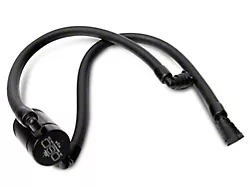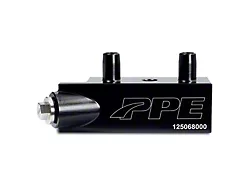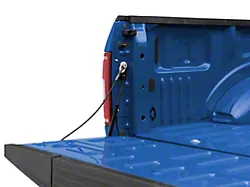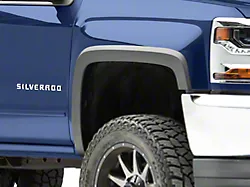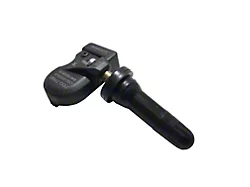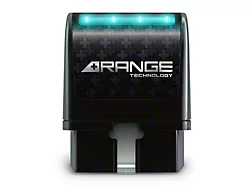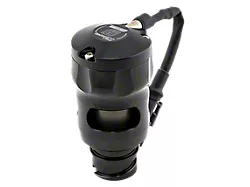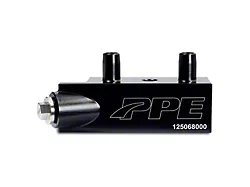
How to Install SuperLift 2.5 in. Suspension Lift Kit w/ Superide Shocks (07-13 Sierra 1500) on your GMC Sierra
Installation Time
3 hours
Tools Required
- Ratchets 3/8" drive
- Metric Sockets 3/8" drive 15mm, 17mm
- Metric Sockets 1/2" drive 21mm, 24mm
- Flathead Screwdriver
- Metric Wrenches 15mm, 17mm, 18mm, 21mm
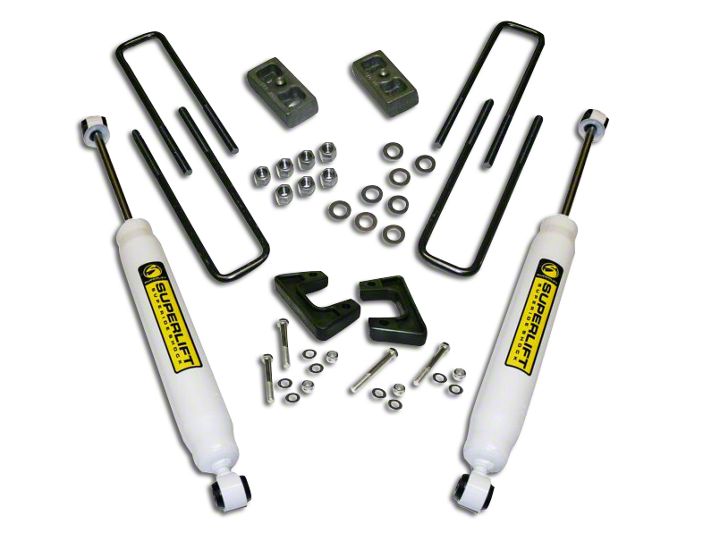
Shop Parts in this Guide
FRONT DISASSEMBLY
NOTE: Save all factory components and hardware for reuse, unless noted.
1) PREPARE VEHICLE...
Place vehicle in neutral. Raise front of vehicle with a jack and secure a jack stand beneath each frame rail, behind the front radius arms. Ease the frame down onto the stands, place transmission in low gear or “park”, and chock rear tires. Remove front tires. Place a jack under the knuckle and raise jack to support knuckle but do not lift the vehicle.
Perform steps 2 through 11 one side at a time.
2) SWAY BAR LINKS...
Disconnect the anti sway bar link from the sway bar body.
3) UPPER CONTROL ARM...
Mark the location of the cam washers and loosen the upper control arm bolts. Do not remove.
4) LOWER CONTROL ARM and LOWER STRUT...
Loosen the lower control arm bolts. Do not remove.
Remove the bolts from the lower strut mount. Lower the control arm slightly and remove the boltclips from the bar pin.
FRONT ASSEMBLY
5) STRUT SPACER...
Position the strut spacer on top of the lower control arm. Raise the lower control arm into place and align holes with the strut. Install the supplied 10mm bolts, washers, and nuts. Bolts must be installed from the bottom. (40)
6) SWAY BAR LINKS...
Attach the sway bar links to the sway bar body and tighten. (50)
7) TIRES / WHEELS…
Tighten the lug nuts (140) in the sequence shown.
WARNING: When the tires / wheels are installed, always check for and remove any corrosion, dirt, or foreign material on the wheel mounting surface, or anything that contacts the wheel mounting surface (hub, rotor, etc.). Installing wheels without the proper metal-to-metal contact at the wheel mounting surfaces can cause the lug nuts to loosen and the wheel to come off while the vehicle is in motion.
WARNING: Retighten lug nuts at 500 miles after any wheel change, or anytime the lug nuts are loosened. Failure to do so could cause wheels to come off while vehicle is in motion.
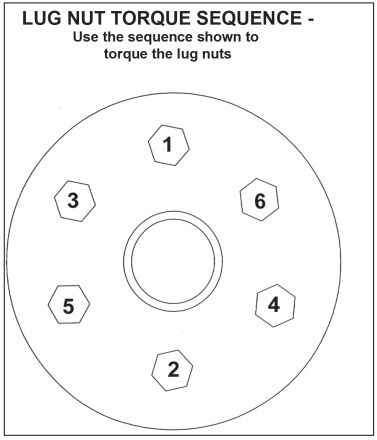
8) CLEARANCE CHECK...
With the vehicle still on jack stands, and the suspension “hanging” at full extension travel, check all components for proper operation and clearances. Pay special attention to the clearance between the tires / wheels and brake hoses, wiring, etc.
Lower vehicle to the floor.
9) FINAL HARDWARE TIGHTENING…
Rotate the cam bolts for the upper control arm to line up the marks made during removal. Tighten (53).
Tighten the lower control arm. (129)
10) SUPERLIFT WARNING DECAL...
Install the “WARNING TO DRIVER” decal on the inside of the windshield, or on the dash, within driver’s view.
11) SUPERLIFT BADGES...
This kit is packaged with a small Superlift badge for a location of your choosing. Prior to installation, use the supplied alcohol pad to eliminate all soap and or other non-adhering residues that may impair adhesion, thoroughly clean the entire area of placement.
Remove the adhesive back and place in the desired location. The adhesive on our badges is pressure sensitive and must be applied using pressure on all areas of the graphic. Like any PSA (pressure sensitive adhesive), it can take up to 72 hours for the adhesive to fully cure. Once the badge is in place do not peel it up, this will diminish the adhesive properties and could result in damaging the badge itself.
To keep your Superlift badge in “like new” appearance keep the badge free/clear of solvents and chemicals that could cause the adhesive to dry or dissolve. This includes gasoline, diesel fuel, paint thinner, and alcohol. Soap and water is all that is needed for cleaning. Degreasers can be used sparingly and hand wiped / applied if needed, although not suggested.
